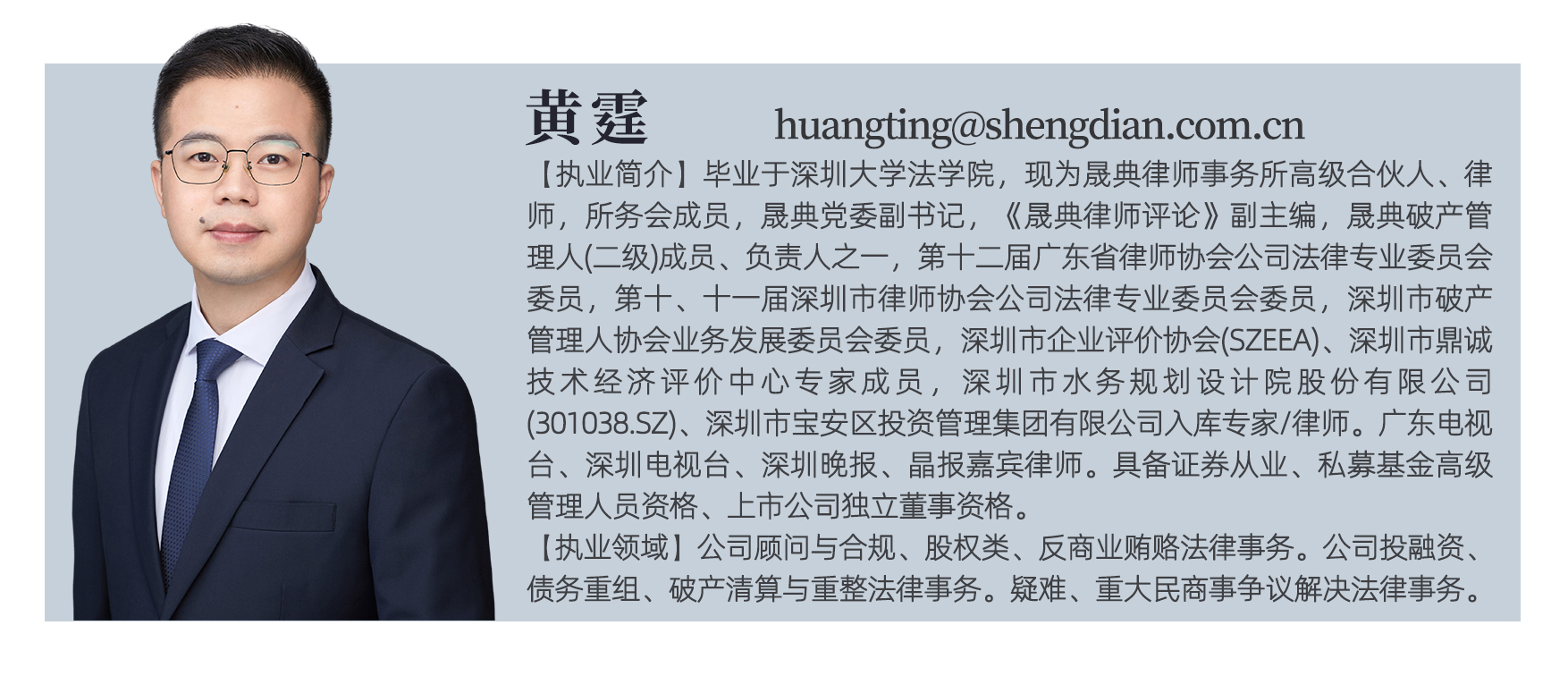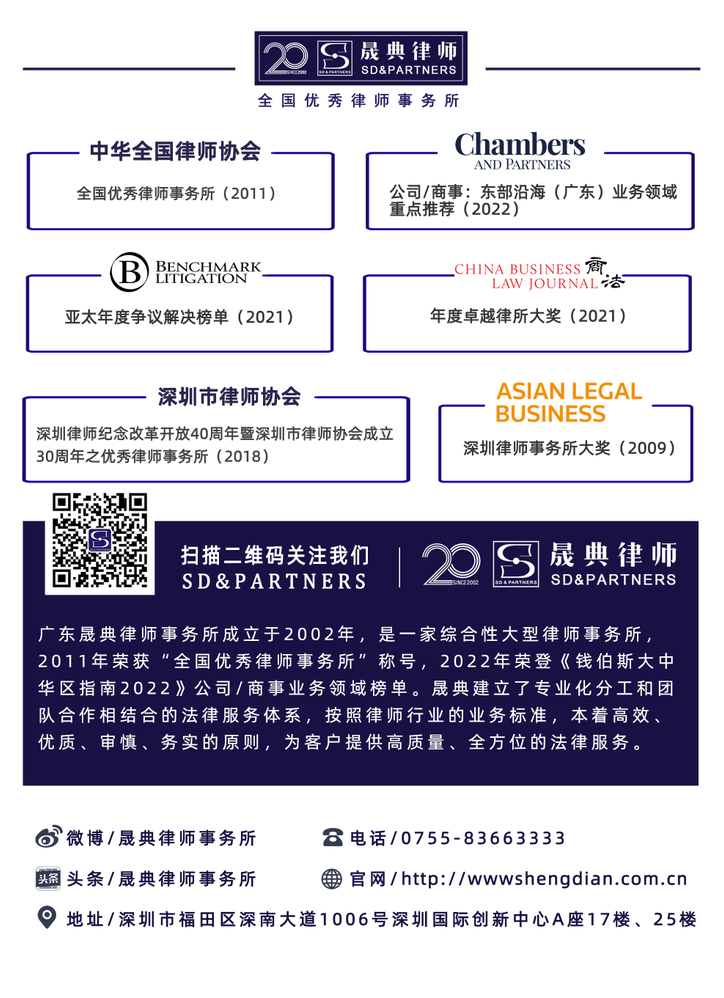The first creditor has the right of priority distribution?
![]() Loading...
Loading...
![]() 2022.04.24
2022.04.24

[Abstract]The Notice does not give the first creditor the right of priority distribution.
On April 14, 2022, the Supreme People's Court issued the "Notice of the Supreme People's Court on Correctly Handling Issues Related to the Effectiveness of Waiting Seals" (referred to as the "Notice"), which triggered discussions in the industry. There is a view that the Notice gives the first creditor the right of priority distribution.
This paper discusses this.
1. Overview of Article 2 of the Notice
"2. waiting for seizure is binding on the first court of disposition. In the case that the first sealing court has a waiting list for sealing up the seized goods, the remaining part of the seized goods after the first sealing creditor is paid off at the changed price cannot be returned to the executed person, and the first sealing creditor and the executed person have no right to deal with it on their own or through consultation. The first court is obliged to inform the court waiting for seizure of the relevant disposal situation before the disposal of the variable price, and transfer the remaining variable price to the court waiting for seizure, which will be handled by the court waiting for seizure according to law. If the court case waiting for seizure is still in litigation, it shall be retained by the first court and dealt with according to law after the trial is determined."
Obviously, the provision is made in the case of "multiple creditors applying for execution of the same executed person.
Presumably, it must be one of them: "The first court has the obligation to inform the court waiting for seizure of the relevant disposal situation to the court known before the disposal of the variable price, and transfer the remaining variable price to the court waiting for seizure, which will handle the case according to law; If the court case waiting for seizure is still in the litigation procedure, it should be retained by the first court and handled according to law after the trial is determined", this led to the dispute that "the notice gives the first creditor the right of priority distribution.
Indeed, from the restriction arrangement that "if the court case waiting for seizure is still in the litigation procedure, it should be retained by the first court and handled according to law after the trial is determined", "the first court has the obligation to inform the known court waiting for seizure before the disposal of the change price of the relevant disposal situation, and transfer the remaining change price to the court waiting for seizure, there are preconditions for the" waiting for the seizure court to deal with it in accordance with the law. So, is the "precondition" that "after the distribution is completed by the first court to the first creditors, and then by the court waiting for seizure to the creditors waiting for seizure"-that is, the first creditors have the right of priority distribution?

2. multiple creditors apply for the execution of the same executed person's order of liquidation.
In order to accurately interpret the above "preconditions", we must find the answer from the current system of implementation regulations. The existing provisions for "multiple creditors applying for execution of the same person" include, inter alia:
1. Provisions of the Supreme People's Court on Several Issues Concerning the Enforcement Work of the People's Courts (for Trial Implementation) (2020 Revised Edition, referred to as the Provisions on Several Issues Concerning the Enforcement Work or the Provisions)
Article 55 If multiple creditors who determine the content of the monetary payment in multiple legal instruments in force apply for enforcement against the same executed person, and each creditor has no security interest in the subject matter of enforcement, it shall be paid in the order in which the enforcement court takes enforcement measures.
Multiple creditors have different types of claims, and claims based on ownership and security interests have priority over monetary claims. If there are more than one security right, it shall be paid off in the order in which the security right was established.
If multiple creditors who determine the content of the monetary payment in an effective legal instrument apply for execution against the same executed person, and if the property executed is insufficient to pay off all the debts, each creditor has no security interest in the subject matter of execution, it shall be paid in proportion to each claim.
2. Interpretation of the Supreme People's Court on the Application of the Civil Procedure Law of the People's the People's Republic of China of China (2015 revised edition, referred to as the Judicial Interpretation or Interpretation of the Civil Procedure Law)
Article 508 If the person subject to execution is a citizen or other organization, and after the commencement of the execution procedure, other creditors of the person subject to execution who have obtained the basis for execution find that the property of the person subject to execution cannot pay off all the claims, they may apply to the people's court to participate in the distribution. Creditors who have priority or security interests in property seized, seized or frozen by the people's court may directly apply for participation in the distribution and claim the right of priority compensation.
Article 510 In the execution of participation in the distribution, after deducting the execution expenses from the execution proceeds and paying off the claims that should be paid in priority, the ordinary claims shall, in principle, be paid in proportion to the total amount of the claims applied for participation in the distribution. The remaining debts after liquidation shall continue to be liquidated. If the creditor discovers that the person subjected to execution has other property, he may at any time request the people's court for execution.
Article 513 in the course of execution, if the enterprise legal person as the person subject to execution meets the provisions of paragraph 1 of Article 2 of the Enterprise bankruptcy Law, the enforcement court shall, with the consent of one of the applicants or the person subject to execution, decide to suspend the execution of the person subject to execution and transfer the relevant materials of the execution case to the people's court of the place where the person subject to execution is domicile.
Article 516 If the parties do not agree to transfer the bankruptcy or the people's court in the place where the person subject to execution is domicile does not accept the bankruptcy case, the enforcement court shall, after deducting the enforcement expenses and paying off the creditor's rights that have priority to be paid, pay off the ordinary creditor's rights in accordance with the order of property preservation and seizure, seizure and freezing of the property in the course of property preservation and execution.
3. Supreme Court Reply: "On the Order of Settlement of Multiple Creditors Applying for Execution of the Same Executed Person" (2021-4-6)
"2. on the order of liquidation of multiple creditors applying for execution of the same executed person.
In the process of revising this judicial interpretation, in order to avoid duplication of provisions, the provisions of the original Articles 89, 90, 92 to 96 of the Provisions on Several Issues of Implementation were deleted, but the provisions of Article 55 (former Article 88) of the Provisions on Several Issues of Implementation were retained. The three paragraphs of article 55 define three principles for the order of settlement: paragraph 1 stipulates that if multiple creditors have claims with monetary payment content and there is no security interest in the subject matter of enforcement, the principle of priority shall apply according to the order in which the enforcement court takes enforcement measures; Paragraph 2 stipulates that creditors have different types of claims, claims based on ownership and security interests take precedence over monetary claims. If there are multiple security interests, they shall be paid in the order in which each security interest was established. Paragraph 3 stipulates that multiple creditors who determine the content of money payment in an effective legal document apply for enforcement, and the enforcement property is not enough to pay off the debt. If each creditor has no security interest in the subject matter of enforcement, it shall be paid in proportion to the amount of each creditor's rights, that is the principle of equality.
The Judicial Interpretation of the Civil Procedure Law further clarifies the handling principles when the property of the person subject to execution is insufficient to pay off all debts. Articles 508 and 510 stipulate that the person subject to execution is a citizen or other organization and is applicable to participate in the distribution procedure. According to the principle of egalitarianism, ordinary creditors are paid in proportion to the amount of creditor's rights. Article 513 stipulates the bankruptcy procedure for the execution of an enterprise legal person. The provisions of the above-mentioned "provisions on several issues of implementation" are general rules in the implementation procedure, rather than applicable to the situation in which the person subject to execution is insolvent, the person applying for execution participates in distribution or the execution to bankruptcy. This part of the provisions does not conflict with the relevant provisions of the judicial interpretation of the civil procedure law, Together, it constitutes a systematic provision for multiple creditors to apply for the execution of the same person subject to execution."
After combing and integrating the above provisions, the order of liquidation rules for multiple creditors to apply for the same executed person shall be:
1. In different cases
(1) Where the person subject to execution is a citizen or other organization: if multiple ordinary creditors in different cases apply for execution of the same person subject to execution, and the creditors applying for execution later do not apply to the first law enforcement court to participate in the distribution, they shall be paid in the order of enforcement measures taken by the enforcement court; Multiple ordinary creditors in different cases apply for execution of the same person subject to execution, and the creditors applying for execution later apply to the first law enforcement court to participate in the distribution, be paid in proportion to each claim.
(2) If the person subject to execution is an enterprise legal person: if multiple ordinary creditors in different cases apply for execution of the same person subject to execution, and if the assets of the person subject to execution are sufficient to pay off all the debts, the person subject to execution shall be paid in the order of enforcement measures taken by the enforcement court; if the person subject to execution is insolvent and does not carry out bankruptcy liquidation, it shall be paid off in the order of property preservation and seizure, seizure and freezing of property.
2. In the same case
If multiple ordinary creditors in the same case apply for execution of the same person subject to execution, and the person subject to execution is insolvent, he shall be paid in proportion to each claim.

3. What is the relationship between the "Notice", "Regulations" and "Interpretation" in this article?
Has the newly issued Notice changed the distribution rules established in the Regulations and Interpretation?
1. Article 6 of the "Several Provisions of the Supreme People's Court on Judicial Interpretation Work" (2021-6-16 Revision) stipulates that the forms of judicial interpretation are divided into "interpretation", "regulation", "rule", "reply" and "decision.The judicial interpretation of how to apply a certain law in the trial work or how to apply the law to a certain type of case or a certain type of problem is adopted in the form of "interpretation. According to the spirit of legislation, the judicial interpretation of the norms and opinions that need to be formulated in the trial work shall be in the form of "provisions. Judicial interpretations regulating the trial enforcement activities of the people's courts may be in the form of "rules. The judicial interpretations formulated by the Higher People's Court and the Military Court of the People's Liberation Army on the specific application of legal issues in trial work shall be in the form of "reply. To amend or abolish a judicial interpretation in the form of a "decision.
It can be seen that the "Regulations" and "Interpretation" belong to judicial interpretation.
2. The basic nature of the Notice is not expressly stipulated at present.
Some scholars believe that according to the form of the above-mentioned notice, the notice of the Supreme Court can be divided into three types: "notice related to judicial interpretation business", "notice related to judicial administration business" and "notice as an intermediate medium carrier. The notice related to the judicial interpretation business refers to the judicial document that, due to the influence of certain factors, carries some questions about how to apply the law in the form of notice, which can have a certain binding force on the judge's judgment of the case.(1)In terms of nature, the basic nature of the notice issued by the Supreme Court related to judicial interpretation is a document of judicial interpretation.(2)
3. Drawing on the above opinions, it can be considered that the rank of the "Regulations" and "Interpretation" is at least equivalent to the "Notice", and the "Notice" cannot replace the "Regulations" and "Interpretation".Therefore, the "Notice", "Provisions" and "Interpretation" will also "together constitute a systematic provision on the order of settlement of multiple creditors applying for execution of the same executed person".

4. the Notice does not give the first creditor priority distribution rights.
Through the above-mentioned research and judgment, the author believes that "the first court has the obligation to inform the court of the relevant disposal situation to the known waiting for seizure before the disposal of the variable price, and transfer the remaining variable price to the court waiting for seizure, which will be dealt with in accordance with the law" or "precondition" should be:
1. When the person being executed is a citizen or other organization, the preconditions are:
(1)The proceedings pending the seizure of court cases have been concluded;
(2)Waiting for the creditor's claim to be supported (or partially supported);
(3)Waiting for the seizure of court cases have entered or are about to enter the enforcement procedure;
(4)Waiting for seizure creditors did not apply to the first court to participate in the implementation of the distribution.
If the creditors waiting for seizure apply to the first court in accordance with the law to participate in the execution of the distribution, the distribution rules of the first creditor and the creditors waiting for seizure shall be implemented with reference to the above-mentioned "multiple creditors apply for the execution of the same execution order.
2.When the person to be executed is an enterprise legal person, the preconditions are:
(1)The proceedings pending the seizure of court cases have been concluded;
(2)Waiting for the creditor's claim to be supported (or partially supported);
(3)Waiting for seizure of court cases has entered or is about to enter enforcement proceedings.
Therefore, the above-mentioned "precondition" is not "first by the first court to the first creditor after the distribution, and then by the court waiting for the seizure to the creditor waiting for the seizure of distribution", that is, the "notice" does not give the first creditor priority distribution right. The purpose of the "Notice" is to further improve the waiting seizure system, strengthen the protection and protection of the interests of creditors waiting for seizure, and prevent debtors from transferring property to evade enforcement.
References
(1) Research on the Supreme People's Court's "Notice", in Legal Science (2020), by Peng Zhongli.
(2) Research on the Supreme People's Court's "Notice", in Legal Science (2020), by Peng Zhongli.
Introduction to the Author



